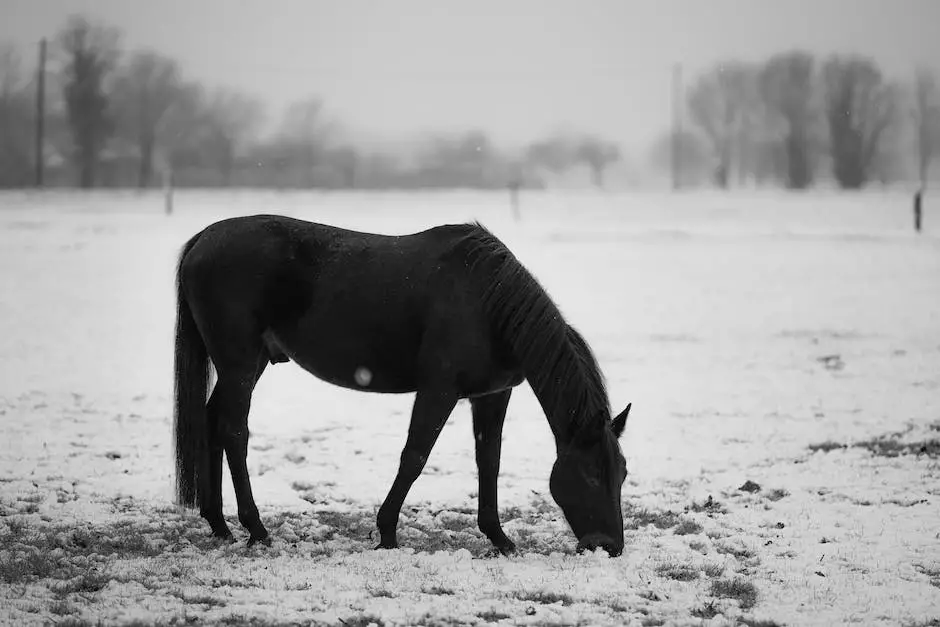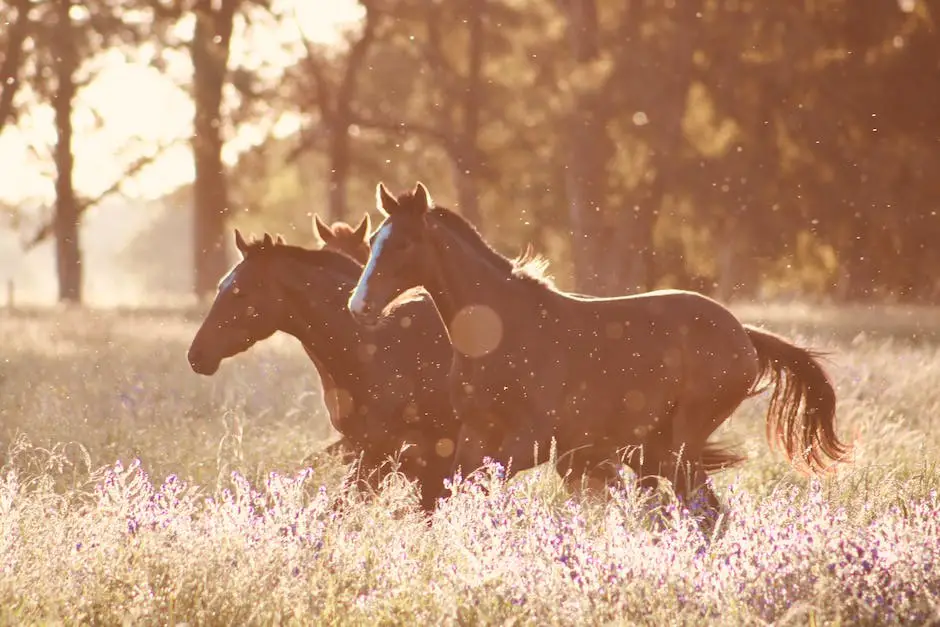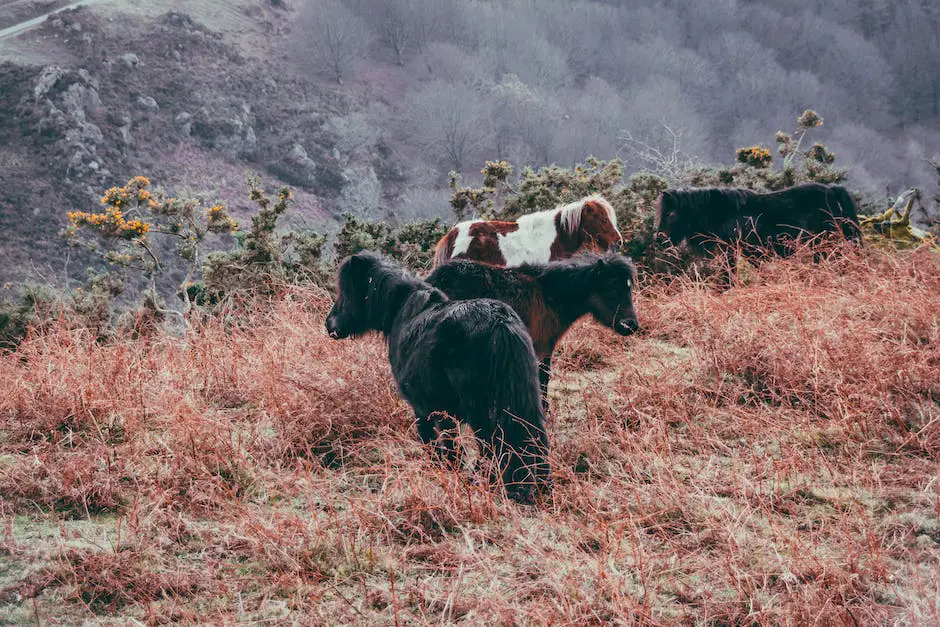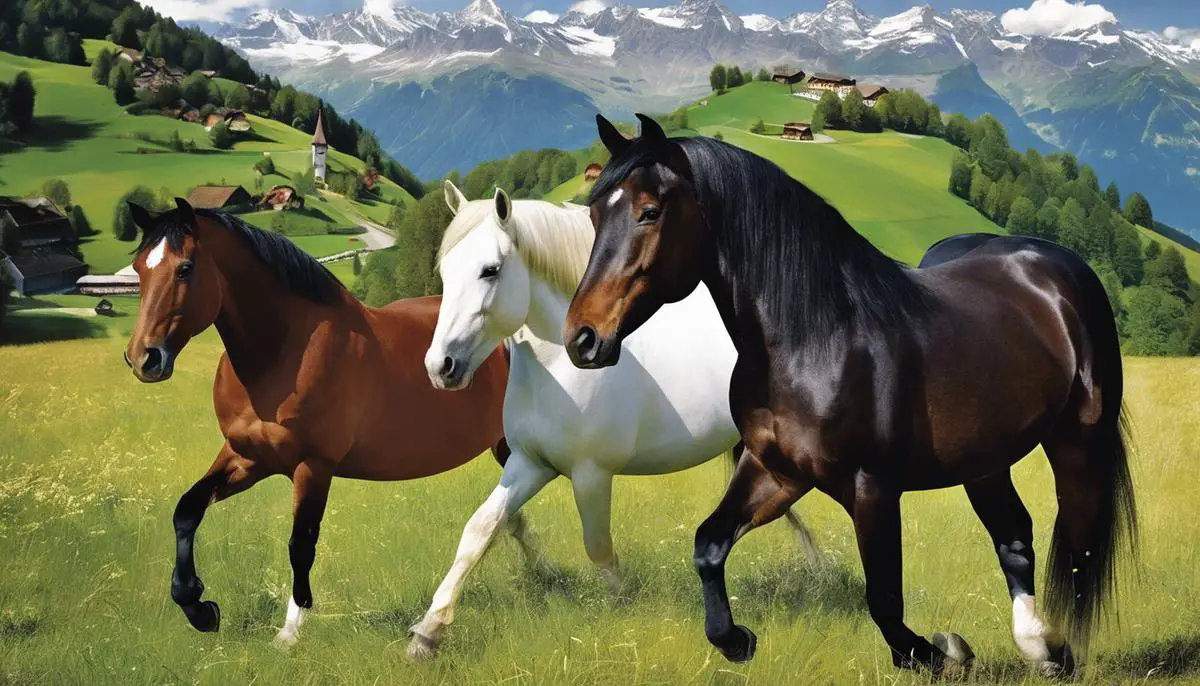Swiss Horse breeds, renowned for their robustness, versatility and noble temperaments, tell a magnificent tale of rich history, unique characteristics and advanced breeding techniques. Spanning across centuries, the narrative of Swiss horse breeds encompasses a broad range of cultural, geographical, and socioeconomic factors. These sturdy equines, deeply ingrained into the country’s culture, wonderfully reflect Switzerland’s harsh climate and challenging landscapes. This narrative not only highlights their physical and genetic traits but also digs into the nuanced breeding techniques that have contributed to their distinction. Comparative analysis against other international breeds further accentuates their strengths and areas of improvement. Contemplating the future course of Swiss horse breeds, numerous factors, including climate change, technological advancements, and shifting societal demands, substantiate the complexity of their perpetuation.
Table of Contents (Horspedia)
History of Swiss Horse Breeds
The history of Swiss horse breeds dates back to the beginning of recorded time.
Therein lies a rich tapestry of events, assorted breeding practices, societal needs, and geographical influences, each shaping the distinctly unique breeds that emerged from Switzerland. In this endeavor, we delve deeply into the tapestry, unraveling the threads that reveal how history has shaped the evolution of Swiss horse breeds over the centuries.
For centuries, the Freiberger, part of the draught horse classification, has played a significant role in Switzerland’s agricultural landscape. This breed finds its roots in the Jura Mountains during the 19th century. The farming communities of that era necessitated a strong, reliable, and docile draught horse for ploughing. As such, the Freiberger, with its impressive endurance and strength, was predominantly developed for this purpose.
However, during the Industrial Revolution in the late 19th and early 20th centuries, the agricultural landscape saw a shift in needs. Machinery gradually replaced manual labour. The stout and strong draught horses faced lessened demand, underpinning the need to adapt the Freiberger breed for a changing world. Subsequently, through judicious breeding practices, a lighter version evolved, rendering the breed apt for leisurely riding and equestrian sports, as a light draught and utility horse.
The other noteworthy Swiss horse breed is the Eringer. The roots of this breed are buried deep in the alpine history of the Valais region of Canton, where these horses were used as transport animals across challenging and mountainous terrains. These horses were selected for their sure-footedness, strength, and resilience in the high altitudes, with their development reflecting the geographical necessities of the region.
Similarly, to the Freiberger breed, the latter half of the 19th century brought advancements that reduced the requirement for work horses. Consequently, the Eringer focus shifted from serving as transport animals to focused breeding for temperament and conformation suitable for riding and pulling small carts.
On a broader genealogical spectrum, Swiss horse breeds have largely retained their genetic diversity due to stringent breeding regulations and practices. This, along with geographical and societal intricacies, conveys a fascinatingly complex evolutionary narrative. The journey track spans from meeting the rigorous demands of farming in the Jura mountains, transport in the alpine terrains of Valais, to adapting with changes brought by industrial revolution and evolving societal preferences in equestrian sports and leisure.
In closing, the history of Swiss horse breeds may tell the tale of evolution, where each breed’s development reflects the shifting needs of civilization, geographical challenges, and a nation’s changing relationship with the horse. A careful survey of these breeds uncovers a beloved testament to the history, embodying the country’s varied lifestyles, shifting agricultural practices, and adaptability to change, celebrating a narrative of resilience and evolution.

Characteristics of Swiss Horse Breeds
Swiss horse breeds, known for their robust and resilient nature, are a product of stringent breeding regimes and geographical challenges. Elucidated further are several defining characteristics unique to these equine wonders.
Examining the Erlenhof breed, the epitome of strength and agility clearly represented, we find its origins in refinement. Once a pack animal used for transporting goods, the adaptable Erlenhof has since transitioned to leisure activities such as recreational riding. This breed, though strong and sturdy, is marked by elegantly arched necks and a calm and docile temperament.
Variations in climate and topography across Switzerland have also played an integral role molding these breeds. One such breed is the Swiss Warmblood, whose long and powerful limbs lend themselves to easy navigation over the porous mountain terrain, a testament to the adaptation of these breeds.
On the simpler side are Swiss Riding Horses, streamlined and versatile in nature. These horses excel in many facets, distinguishing themselves in both competitive and leisure arenas. Perhaps this versatility and consistency are what maintain the Swiss Riding Horse’s popularity, despite the scarcity of the breed worldwide.
Studying Swiss horses like a book of tales, we see examples of resilience throughout history like few others. The Franche-Montagnes for instance, also known as the Freiberger, offers insight into equine survival. Enduring challenges posed by mechanization during the Industrial Revolution, they have undergone adaptation and natural selection, transitioning from agricultural utility to leading roles in equitourism today.
The Swiss Draft horse breed, or Schwyz, is another manifestation of survival. Once close to extinction in the 20th century, a revitalization program has ensured their continued existence. Inward breeding and selective policies discovered an underlying versatility in the breed, leading the Schwyz to become a reliable mount for all disciplines, blending power with charm.
Mentioning Swiss horse breeds without reference to the Haflinger would be remiss. Originating from Austria but widely present in Switzerland, this breed’s distinguishing feature is its beautiful chestnut tones, sandy mane, and tail. Despite their smaller structure, Haflingers are remarkably robust, suitable for a range of purposes from draft work to leisure riding.
What stands out about each of these unique Swiss breeds is their shared aptitude for flexibility. While geographical diversity posed challenges over centuries, it also presented opportunities for evolution. A common thread through Swiss horse breeds is adaptability born out of necessity, a virtue that continues to define them today.

Genetic traits and Breeding Techniques
For all their diversity and adaptability, Swiss horse breeds share certain genetic traits that breeders prize and propagate using a variety of innovative techniques.
One stand-out feature seen across most Swiss horse breeds is their resilience. Well-known Swiss horse breeds like the Swiss Warmblood and the Original Swiss Coldblood are not simply sturdy, but capable of adjusting to different climates and circumstances – a testament to their remarkable genetic trait of adaptability. This is a result of the harsh and varied weather conditions in Switzerland, where these horses have developed a heightened degree of endurance.
Strong muscular structure is another desirable trait seen across all Swiss horse breeds, making them excellent for a variety of purposes, from riding and farming to sports. This muscularity allows breeds like the Swiss Draft horse to excel in demanding conditions and act as powerful labor animals while breeds like Franche-Montagnes have developed a mix of strength and agility that makes them ideal for riding.
Selective breeding has also promoted a harmonious alignment of body features, resulting in compact but sturdy breeds like the Freiberger. Intelligence, coupled with a calm and affable nature, is highly sought after in breeds like the Swiss Warmblood, making them exceptional competition horses.
Venturing into the specifics of breeding techniques, one of the primary methods used to ensure the propagation of these traits is line breeding. This involves mating horses that share a common ancestor to preserve a particular trait. Though this technique must be carefully managed to prevent inbreeding, it is a widely used method, particularly in maintaining the genetic aspects of the Swiss Warmblood.
Artificial Insemination (AI) is another popular method used in horse breeding. This technique allows breeders to increase genetic diversity by using semen from studs located in different regions or even countries. This ensures advantageous traits – seen in international breeds – that can be introduced into Swiss breeds, promoting a more vibrant and versatile genetic pool.
Genomic selection is being increasingly utilized to predict the genetic potential of a horse. Using DNA information, breeders can now select individuals with the best genetic potential for specific traits – an approach that could speed up the selective breeding process dramatically.
It is with such dedication and meticulousness that the revered Swiss horse breeds are propagated — these unrivaled animals representing both the triumph of dedicated breeding practices and the awe-inspiring resilience of life. The continuum of their traits, both physical and behavioral, and the methodology behind their propagation offer rich insight into the intricate relationship between humankind and the equine world.
The harmonious intermingling of natural adaptation and human intervention has resulted in horse breeds that continue to serve and enhance lives, be it for utilitarian purposes, sporting prowess, or simply companionship. This is the remarkable tale of Swiss horse breeds, and it continues to evolve, driven by the inescapable winds of change and the inexorable march of scientific progress.

Comparative Analysis with Other Horse Breeds
Diving into the robust universe of equine diversity, it must be understood that Swiss horses possess unique characteristics that distinctively set them apart from various international breeds.
With the already explored topics of history, socio-geographical factors, and diverse breed types of the Swiss equine world, it is essential now to concentrate on a comparative analysis focusing on physical traits, behavioral diversity, genetic factors, and the impacts of advanced breeding technologies.
Compared with other international breeds, Swiss horses possess inherent physiological traits conducive to endurance and strength. Their compact yet solid structure, coupled with significant muscular development, offers robustness and durability, causing them to stand their ground against illustrious breeds such as Arabian horses known for endurance, or Belgian Draft horses identified by their significant strength. This impressive robustness blends with outstanding versatility, allowing Swiss breeds to excel across a range of activities from ploughing fields to competing in dressage.
One of the cornerstones responsible for these distinctive attributes is selective breeding, a practice also observed in other global horse clans. However, Swiss breeding has remained more conservative, focusing on preserving the horses’ hardiness and adaptability. For Swiss breeds like the Franche-Montagnes, importance is given to maintaining noble stature, calm temperament, and physical robustness. This can be contrasted with the Thoroughbred breed where the emphasis has been on speed for competitive racing.
Swiss horses stand out in the contemporary equine landscape through their impressive response to advances in breeding technology. Practices like Artificial Insemination (AI) and genomic selection have been adopted to maintain and enhance desirable Swiss horse attributes. While AI is commonly embraced worldwide, Swiss horse breeders have been particularly adept at using this technology to increase genetic diversity and preserve specific traits among local breeds, a practice which places Switzerland among the leading countries in equine AI application.
Genomic selection, although a more recent addition to Swiss horse breeding, is playing a significant role in transforming the landscape. Unlike the internationally famous Icelandic horses, where minimal movements are considered ideal, Swiss breeds were selected for a wide range of movements, often a key factor in determining their versatility. Genomic selection allows breeders to predict a horse’s genetic potential more accurately, upholding the strength and resilience Swiss horses are esteemed for, while enhancing their ability to adapt and thrive in a broad array of environments.
Last but not least, the unique blend of natural adaptation and human intervention has been evident throughout the evolution of Swiss horse breeds. This conscious intermingling stands out in the international equine arena, reflecting not just in the horses’ physical and behavioral traits, but also their ability to serve various purposes. From being reliable workhorses in agriculture to demonstrating proficiency in recreational activities and sports, Swiss horses continue to exhibit their ever-evolving nature stimulated both by a rigorous natural environment and relentless scientific progress.
In conclusion, the Swiss horses’ robustness, versatility, and adaptability emerge not only through their incredible history of selection and adaptation but also via a proactive embrace of advanced breeding technologies and methodologies, setting a comprehensive and coherent example for the global equine community.

Future of Swiss Horse Breeds
The evolution of Swiss horse breeds is marked by far-reaching ramifications of changing ecosystems and societal values. Swiss horse breeds have faced considerable challenges over the centuries, persistently proving their durability and adaptability.
In upcoming years, these exceptional equine breeds may encounter unique hurdles. The perceived threats, however, can also be viewed as transformative opportunities. As societies progressively accept concepts like climate change and sustainability, the value of these robust, adaptable horse breeds may rise significantly.
Climate change, for instance, is projected to affect Switzerland’s agricultural practices profoundly. As agricultural methods inevitably adjust in response to transforming climate patterns, one may anticipate a parallel adaptation in the roles of Swiss horse breeds within these practices. It is feasible that the sturdy and versatile Haflinger breed may experience a surge of popularity for their proven ability to thrive in multiple settings, from snowy mountain paths to fertile lowland soils.
Further, the recognition of the inextricable tie between ecology and agriculture has sparked renewed interest in holistic, organic farming practices which significantly value the use of draught animals. Here, the Swiss Draft horse, a breed known for its immense strength and calm disposition, might experience a renaissance in this green, back-to-the-earth movement.
On the other side of the coin, the societal inclination towards equestrian sports and leisure activities is likely to affect the trajectory of Swiss horse breeds. Swiss Riding Horses, revered for their balance and elegance, could see a boon due to increased demand in equestrian sports such as dressage and show jumping.
Future breeding practices are also likely to be uniquely informed by advanced genetic technologies. Building upon the tradition of line breeding, breeders might make increased use of artificial insemination (AI) and genomic selection for strategic trait propagation. These scientifically guided practices could further refine the characteristics of Swiss horse breeds, enhancing traits valued in different spheres such as strength, endurance, and temperament.
Recreational tourism, which has burgeoned tremendously on a global scale, also paints a hopeful picture for the future of these exceptional breeds. The versatile and affable Freiberger breed, which have historically shown their worth as trustworthy, mild-mannered pleasure horses, might find themselves in higher demand in a world increasingly biased towards eco-tourism and immersive rural experiences.
In summary, while the shifting terrain of ecological and societal dynamics poses unique challenges for the future of Swiss horse breeds, it also presents a myriad of opportunities. Capitalizing on these opportunities, coupled with strategic and scientifically-informed breeding practices, is poised to usher these Swiss horse breeds into a future of continued relevance and esteem.

As we look towards the horizon of Swiss horse breeds, the interplay between the changing climate, enhanced breeding techniques, and societal demands offers an intriguing perspective. Swiss breeders are likely to face significant challenges, but also exciting opportunities in the decades to come, as they strive to retain the cherished attributes of their horse breeds while also adapting to evolving circumstances. Their efforts will not only impact these magnificent animals, but also the farming, equestrian sports, and rural tourism sectors they are deeply connected with. The enduring legacies of Swiss horse breeds hang in the balance of these dynamic influences, carrying the weight of history while stepping towards an uncertain, yet hopeful future.

